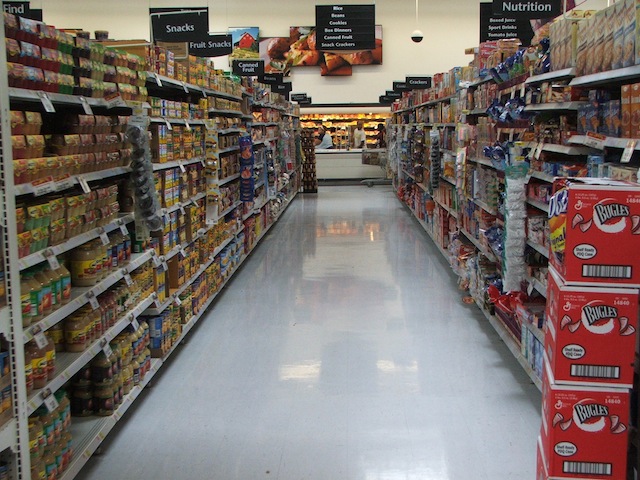Share the post "Your Grocery Store Is Tricking You"
Have you ever left the grocery store wondering how you spent so much more than you had planned? Don’t get down on yourself. Grocery stores use a variety of tricks to lure you into buying items you hadn’t intended, as well as the most expensive version of items on your list.
Being aware of these tricks, and knowing how to avoid them, can go along way in keeping your grocery budget under control.
Eye Level
Stores place premium items right at eye level. They are counting on you to be in just enough of a hurry to look at your list and see “Jelly” or “ketchup” and look right to the shelf and grab what’s in front of you. These items frequently cost more than their competitors. Companies can even pay for premium shelf placement.
Make sure you look from the top shelf all the way to the bottom. You’re more likely to get a good deal if you take the time to look around.
Numbers Game
You know those 10 for $10 deals? They’re totally tricking you. Sure, you’re getting organic mac n cheese for a buck but do you need 10 boxes? Ok, maybe you DO need 10 boxes of organic mac n cheese (I do!), but these deals often cause you to buy far more than you need or even want. When you see a set number on the sign, your brain feels the need to match that number. You buy 10 or even 20. But the price stands no matter how many you buy. If you only need one jar of peanut butter then it is still just $1.
The best way to avoid this trap is to be aware. Know that they are hoping you’ll see the 10 and feel the need to get it. You are not required to do so (unless signage states otherwise). Think about what you need and will use. If it’s a good deal and you want to stock up, then go ahead. If you just feel like you HAVE to get 10 then take a moment to think it over.
Samples
I know plenty of people who really look forward to sample day at the store. Who doesn’t love a little snack while shopping? Sometimes you even get to try new things you wouldn’t otherwise buy for yourself. Stores use samples in two ways to lure you into spending more. The first is obvious: you taste it and like it so you buy it. It is not likely to be an item already on your list and they conveniently don’t have prices listed at the sample station. The second way samples cause you to spend more is a bit more sneaky: guilt. People often feel very guilty taking the sample from the sweet old lady and listening to her tell about the product, without actually buying it. They feel a certain debt.
If you like the product make note of what it is. Do some more of your shopping and if you just can’t shake how tasty it was, go find it in the aisle and decide if you want to buy it. Chances are you’ll have moved on by the time you’re a few aisles away or that you’ll discover they aren’t worth the price. As for the guilt, get over it. This is a mental trapping the stores are counting on. Remind yourself that the sample-giver is paid to do this and the whole point is to try to up sales. You in no way owe anyone a purchase for tasting a sample. If you can’t seem to shake the feeling then simply decline the sample.
End Caps and Aisle Displays
You will often see elaborate displays at the end of aisles as well as in the center of larger aisles. You may think they are showcasing some serious deals and that is certainly what they hope you think. But you would be wrong. The end caps are high price real estate. Companies are willing to pay a high price for these displays as they are seen from many angles and places within the store. You’ll also find some very tricky marketing from the stores on these displays. They will often pair items that go together, such as peanut butter and jelly or marshmallows, graham crackers and chocolate bars. Displays like this will either have no items on sale or only one of the many items there is on sale. They count on the convenience and appeal to draw you into buying it all.
This trick is basically overcome by being aware. Know that the stores are trying to fool you and refuse to be tricked. If you see the makings of smores on the end cap and you decide you really want to make smores, go to the individual locations for each item and look for the best deal.
Just being aware of some of the tricks stores use to increase sales improves your chances of not being fooled. You may even find yourself being a bit skeptical and mentally pointing out other tricks as you shop.
«Buy Me a Pie!» — the most convenient, easy and elegant application :(iPhone/iPad) | (Android) |
Share the post "Your Grocery Store Is Tricking You"








 EN
EN  RU
RU